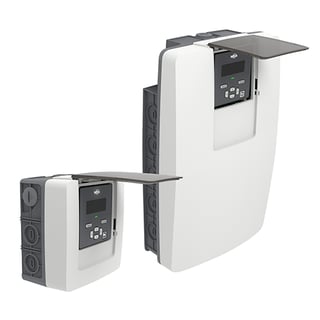 The goal of any commercial property owner is to attract tenants while also still being profitable. Operating a large building often means having a lot of expenses and other overhead costs, whether they be for maintenance, repairs, utilities, or the multitude of other expenditures any business could incur.
The goal of any commercial property owner is to attract tenants while also still being profitable. Operating a large building often means having a lot of expenses and other overhead costs, whether they be for maintenance, repairs, utilities, or the multitude of other expenditures any business could incur.
As one could imagine, there are many opportunities for cost savings with regards to building efficiency that could seriously improve a leasing company or a landlord's bottom line. Investing in energy management and implementing cost saving measures benefit not only residential and commercial buildings, but also hospitals and other healthcare facilities, too.
How tenants are typically billed
In non-submetered commercial and residential buildings, for instance, tenants are typically billed on square footage of rented space. In this scenario, the landlord receives an electrical bill for the entire facility and bills each tenant based on the amount of space they rent.
The problem here is that tenants are not billed based on power consumption behavior, but rather they are billed based on the total consumption of the rest of the tenants. Because tenants realize that they are not billed based on individual consumption, there is no incentive to reduce consumption. The expectation is that if nobody else changes their behavior then each tenant will still pay the same amount; it’s a prisoner’s dilemma!
How tenant submetering works.
Tenant billing and tenant submetering allows each tenant to be billed only for the energy consumed within the rented space. Tenant submetering changes behavior because everyone becomes accountable for their own consumption behavior. Studies have shown that monitoring energy consumption by the end users monitor their energy consumption they may reduce up to 15% of their energy.
 To do this, landlords can install revenue-grade power meters throughout their building and monitor the energy usage of each individual tenant. These user-owned meters are often more robust than ones the power company supplies. Networked power meters can monitor many different parameters, such as harmonic distortion and power factor, that can help pinpoint problem areas in a building and maximize efficiency.
To do this, landlords can install revenue-grade power meters throughout their building and monitor the energy usage of each individual tenant. These user-owned meters are often more robust than ones the power company supplies. Networked power meters can monitor many different parameters, such as harmonic distortion and power factor, that can help pinpoint problem areas in a building and maximize efficiency.
Power monitoring can also be integrated in a building automation system (BAS) and allow for a facility manager to have even more control. Installing a power meter is also one of the steps required for a building to become LEED certified green building.
Benefits of tenant submetering
- High ROI; a meter costing a couple hundred dollars can help save thousands over time.
- Can reduce landlord tenant disputes.
- Empowers tenants to reduce energy consumption.
- Data from a power meter can provide owners with valuable consumption data and help identify areas of concern.
- Attract high-quality and long-term tenants.
- Improve your building's overall sustainability; turns your building into a green building and smart building.



